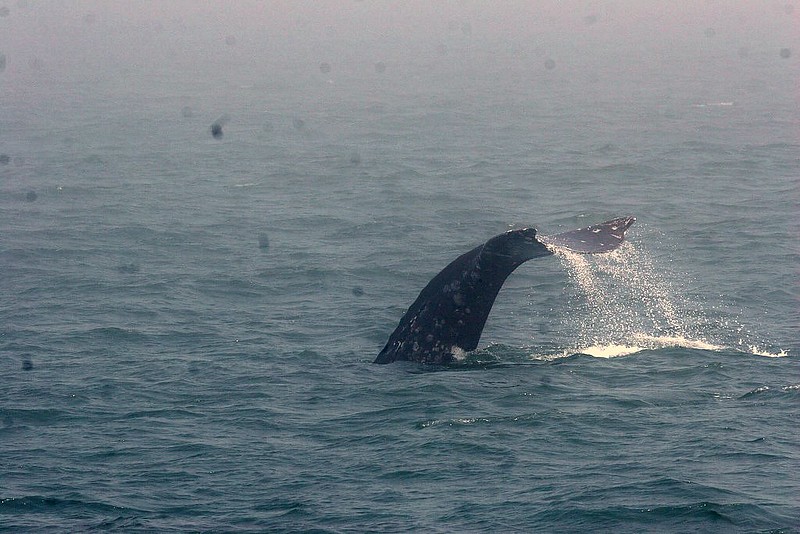Honey I shrunk... the whales? All joking aside, new research suggests that we as a species might have done just that. As humans, our impact on the environment has played a crucial role in global climate, ocean acidification, rising temperatures, plastic and other debris in the ocean, and even precipitation patterns. Scientists are interested in how those environmental changes caused by humans have affected various species, and have recently been studying gray whales along the Pacific Coast. One of the things being studied is how the size of gray whales has changed in recent years, and the results are disturbing: many gray whales are much smaller than they used to be.
Size Of Gray Whales Is Shrinking - May Be Due To Changes In Ocean

Ok, the climate is changing. We know that, and we know that some (or most) of those changes are because of humans. Scientists have been studying things like the acidity of the ocean for a long time, so they're able to tell when there are changes. But what does all this have to do with the size of gray whales?
Once hunted almost to extinction, gray whales are protected via the Marine Mammal Protection Act and the Endangered Species Act. As a result, they've been studied a lot and continue to be studied by scientists to see how their population size changes due to the protective measures meant to save them. A new study focusing on the The Pacific Coast Feeding Group population (about 200 whales that winter in lagoons off of southern California and feed along the northern Pacific coast) has shown that in the last 20 years, gray whales have been smaller than their predecessors.
And this study isn't alone. One study says that up to three fourths of marine fish are smaller in size than they used to be. You might think that's not concerning, except for the fact that more than three billion people rely on fish as their main source of protein around the world, so any major change to the marine life population, fish or mammal is worth investigating.

We don't eat gray whales, obviously, but it's still important to study them and how they're faring in changing oceans. Their body size influences many aspects of their daily life such as behavior, how they preform in the wild, and how resilient they are to stressors in the environment. Since the year 2000, the length of the studied whales along the NE Pacific Coast has gone down so much that new whales in this group are expected to be 13% shorter when fully grown.
New male and female gray whales are shrinking, but the change is happening in the females the fastest. New female gray whales in the studied group are now almost as small as males. The study correlates this finding with two different changes in the ocean, which you can read about here.
To be clear, the data collected is concrete, but correlations (measuring the relationship between one thing and another) don't prove that the shrinking whale population is due to changing ocean climate, though it does suggest it. More research is still needed and is ongoing.
Earlier in the article you mentioned ocean acidity as an example. How have humans impacted ocean acidity? While ocean acidity isn't one of the things studied in this particular instance regarding gray whales, ocean acidity has been studied for quite some time. Since the industrial revolution, average seawater acidity has increased by 30 percent. That's a huge impact made on the ocean due to human activity.













